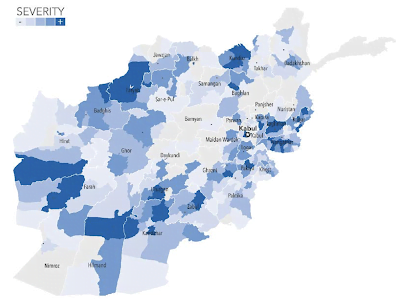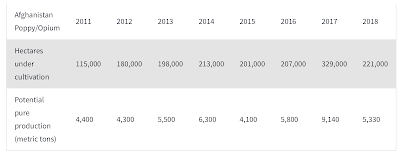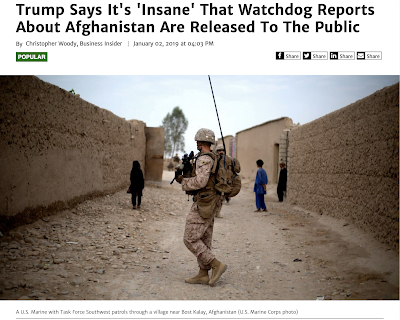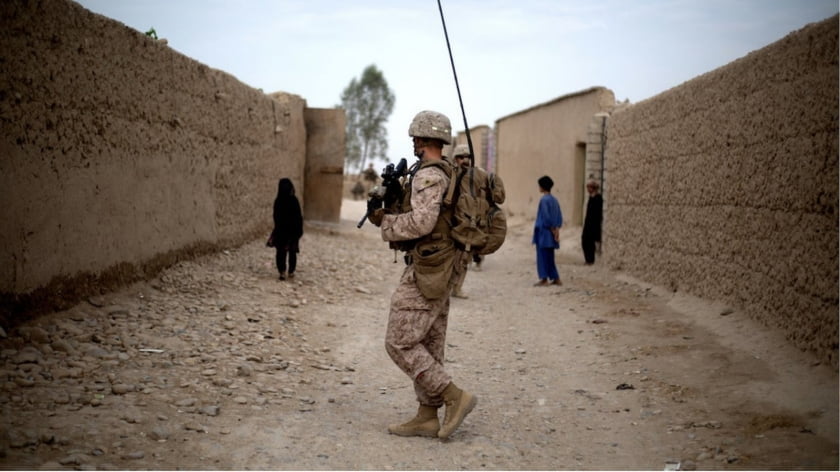The Long War in Afghanistan – Lying and Deceiving the American People
At a recent hearing “U.S. Lessons Learned in Afghanistan” before the House Foreign Affairs Committee, the Special Inspector General for Afghanistan Reconstruction (SIGAR), John Sopko, clearly outlined the lies that Washington has told Americans during the 18-year-old war in Afghanistan that shows no real signs of progress or resolution other than the “conditional peace agreement” that was signed with the Taliban on February 29, 2020. If you weren’t aware of SIGAR, it was created by Congress in 2008 to oversee and report on waste, fraud and abuse regarding reconstruction spending in Afghanistan. SIGAR is not tasked with determining whether or not the United States should have attacked Afghanistan in the first place and whether the American military should remain there. Since its inception, investigations by SIGAR have saved United States taxpayers $3 billion and led to the convictions of more than 130 individuals for crimes related to the rebuilding of Afghanistan.
Here is a video showing his entire testimony:
Let’s pick out some of the salient points from the transcript of the testimony. Inspector General Sopko opens by noting that 2372 American military personnel have died in the conflict thus far and that American taxpayers have spent more than $133 billion on reconstruction efforts. Here are his comments on the success of the mission thus far:
“…on March 25, 2013, I sent letters to the Secretary of State, the Secretary of Defense, and the Administrator of the U.S. Agency for International Development, asking them to each provide me with a list of their agency’s ten most successful Afghanistan reconstruction projects and programs, as well as a list of the ten least successful, along with a detailed explanation of how these projects and programs were evaluated and the specific criteria used for each.
The answers we received from the agencies were informative, but—as you can see from Appendix I—they failed to list or discuss each agency’s 10 most and 10 least successful projects or programs. As my letter of July 5, 2013 noted, this failure limited our understanding of how government agencies evaluated and perceived both success and failure, which was critical for formulating lessons learned from past reconstruction projects and programs.
It is perhaps understandable that agencies would want to show their programs in the best possible light—and it is certainly understandable that the private firms, nongovernmental organizations, and multilateral institutions that implemented those programs would want to demonstrate success. Yet a recurring challenge to any accurate assessment has been the pervasive tendency to overstate positive results, with little, if any, evidence to back up those claims.“
Here is a look at quotes (noting that all bolds are mine) regarding several metrics that have been used to convince Americans that the reconstruction efforts have been successful:
1.) Education: “…in a 2014 agency newsletter, the then-USAID administrator stated that “today, 3 million girls and 5 million boys are enrolled in school— compared to just 900,000 when the Taliban ruled Afghanistan.” But when SIGAR subsequently conducted an audit of U.S. efforts to support primary and secondary education in Afghanistan, we found that USAID was receiving its enrollment data from the Afghan government and had taken few, if any, steps to attempt to verify the data’s accuracy, even though independent third parties and even the Afghan Ministry of Education had called the numbers into question. And because USAID education support programs lacked effective metrics, it could not show how U.S. taxpayer dollars had contributed to the increased enrollment it claimed.“
2.) Child Mortality/Life Expectancy: In that same agency newsletter, the then-USAID administrator said that since the fall of the Taliban, “child mortality has been cut [in Afghanistan] by 60 percent, maternal mortality has declined by 80 percent, and access to health services has been increased by 90 percent. As a result, Afghanistan has experienced the largest increase in life expectancy and the largest decreases in maternal and child deaths of any country in the world.” However, when SIGAR issued an audit of Afghanistan’s health sector in 2017, we found that while USAID publicly reported a 22-year increase in Afghan life expectancy from 2002 to 2010, USAID did not disclose that the baseline it used for comparison came from a World Health Organization (WHO) report that could only make an estimate because of limited data. A later WHO report showed only a 6-year increase in Afghan life expectancy for males and an 8-year increase for females between 2002 and 2010—a far cry from the 22 years that USAID claimed. As for the maternal mortality claims, SIGAR’s audit found that USAID’s 2002 baseline data was from a survey that was conducted in only four of Afghanistan’s then-360 districts.
3.) Assisting Afghani Women: “…a SIGAR audit into U.S. government programs to assist women in Afghanistan found that “although the Department of Defense, Department of State, and USAID reported gains and improvements in the status of Afghan women . . . SIGAR found that there was no comprehensive assessment available to confirm that these gains were the direct result of specific U.S. efforts.” And while State and USAID collectively reported spending $850 million on 17 projects that were designed in whole or in part to support Afghan women, they could not tell our auditors how much of that money actually went to programs that supported Afghan women.“
Hopeing not to repeat mistakes made in a future conflict.
4.) Improving the Rule-of-Law: “Another SIGAR audit looked into the more than $1 billion that the United States had spent supporting rule-of-law programs in Afghanistan. Shockingly, we found that the U.S. actually seemed to be moving backwards as time went along. Our audit found that while the 2009 U.S. rule-of-law strategy for Afghanistan contained 27 specific performance measures, the 2013 strategy contained no performance measures at all.“
5.) Rebuilding Afghanistan’s National Defense and Security Forces: “Our analysis revealed that the U.S. government was ill-prepared to help build an Afghan army and police force capable of protecting Afghanistan from internal or external threats and preventing the country from becoming a terrorist safe haven. U.S. personnel also struggled to implement a dual strategy of attempting to rapidly improve security while simultaneously developing self-sufficient Afghan military and police capabilities, all on short, politically-driven timelines. We found that the U.S. government lacked a comprehensive approach and coordinating body to successfully implement the whole-of- government programs necessary to develop a capable and self-sustaining ANDSF. Ultimately, the United States—after expending over $70 billion—designed a force that was not able to provide nationwide security, especially as the force faced a larger threat than anticipated after the drawdown of coalition military forces.“
6.) Counternarcotics: “We found that no counterdrug program led to lasting reductions in poppy cultivation or opium production—and, without a stable security environment, there was little possibility of success. The U.S. government failed to develop and implement counternarcotics strategies that outlined or effectively directed U.S. agencies toward shared goals. Eradication efforts ultimately had no lasting impact on opium cultivation, and alienated rural populations. Even though U.S. strategies said eradication and development aid should target the same areas on the ground, we found—by using new geospatial imagery—that frequently this did not happen. Development programs failed to provide farmers with sustainable alternatives to poppy.“
Here are the key lessons that SIGAR has learned:
1.) Successful reconstruction is incompatible with continuing insecurity.
2.) Unchecked corruption in Afghanistan undermined U.S. strategic goals that helped to foster that corruption.
3.) After the Taliban’s initial defeat, there was no clear reconstruction strategy and no single military service, agency or nation in charge of reconstruction.
4.) Politically driven timelines undermine the reconstruction effort.
5.) To be effective, reconstruction efforts must be based on a deep understanding of the historical, social, legal and political traditions of the host nation.
To give you some idea of the scope of failure in Afghanistan, here is a map showing the current government-controlled regions in Afghanistan (in dark green) at the end of 2018:
The Taliban claim to control 68 districts, the Government of Afghanistan controls 133 and 196 districts are contested.
Here is a map showing the severity of the conflict (i.e. bombings and other Taliban insurgent attacks) still ongoing in Afghanistan:

Here is a table showing the number of civilian casualties between 2009 and 2018, noting that the number of total civilian casualties in 2018 is nearly double the number in 2009:

From statistics on the White House website, here is a table showing how poppy/opium production in Afghanistan remains near record highs:

Let’s close with some final remarks from Inspector General Sopko:

“There’s an odor of mendacity throughout the Afghanistan issue…mendacity and hubris…. the problem is there is a disincentive, really, to tell the truth. We have created an incentive to almost require people to lie…when we talk about mendacity, when we talk about lying, it’s not just lying about a particular program. It’s lying by omissions. It turns out that everything that is bad news has been classified for the last few years.”
So, how does the current administration in Washington respond to this? Here’s what could lie ahead for SIGAR and the Inspector General:

Apparently, there’s nothing like lying to American taxpayers when it comes to a losing war. Or hiding what is found.
By A Political Junkie
Source: Viable Opposition







